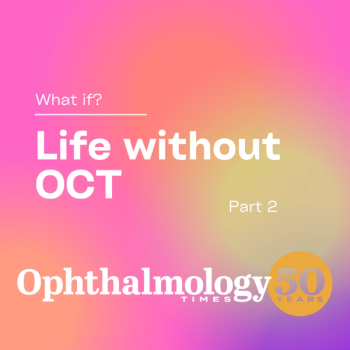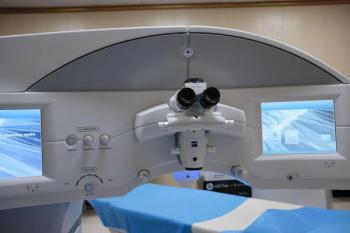
- Ophthalmology Times: July 15, 2020
- Volume 45
- Issue 12
Clearing hurdles to large scale telemedicine adoption
During the COVID-19 pandemic, it is important to develop technologies to keep patients and staff safe, while treating the diseases of the eye
Special to Ophthalmology Times®
Not surprisingly, the
Although it is too early to know what the impact will be, there is evidence of accelerated innovation and widespread changes in reimbursements and service modalities.1
To “flatten the curve,” most states instituted social distancing and “shelter-in-place” mandates. As a consequence, many nonacute and elective medical visits were replaced by telemedicine.2
Related:
Given the unanswered questions of prevalence, transmissibility, and mortality rate of
Further, experts theorize that the disease is likely to recur in the coming fall and winter.3 Combined with seasonal influenza, this second wave will require health care systems to accelerate the adoption of telemedicine.
Indeed, the Centers for Medicaid and Medicare issued telemedicine CPT codes to support its 1135 emergency waiver on March 6. 2020.4
Our belief is that these measures will become permanent, with the likely seasonality of the
In this commentary, we explore the technological obstacles to the widespread adoption of telemedicine in ophthalmology and the resources required to make this transformation sustainable.
We believe that an analysis of telemedicine adoption needs to start from the patient’s perspective. The degree to which telemedicine can fully meet the needs of a patient will depend on the stage of their clinical journey.
Related:
First, patients who are emotionally and cognitively ready are more likely to accept the inherent limitations, such as the lack of body language in the encounter.5
Patients who require high fidelity diagnostics, such as patients with neovascular age-related macular degeneration (NVAMD) who require regular
Finally, patients who require invasive procedures, such as surgical repair for retinal detachment, are unlikely to benefit from telemedicine—unless they have access to facilities near home that offer robotic surgical capabilities combined with trained providers.
For the provider, a minimum viable telemedicine product must include secured video-based communications platforms that are HIPPA compliant.
The good news is that these features are now part of large electronic medical record (EMR) systems such as EPIC and Cerner.6
For the patient, a minimum viable telemedicine platform needs to include reliable (ie, up-down bandwidth of at least 1.5 MB) internet service, a quiet and private location at home, and a high level of emotional and cognitive familiarity with the technology so it is not a barrier to the visit.
Related:
Ultimately, a productive implementation of telemedicine in ophthalmology will depend on where, along the typical patient’s clinical journey, the provider creates the greatest value and if the technology can deliver on that promise. Hence, the provider’s case mix is key to the technology adoption decision.
Using the retina subspecialty as a use case, we believe there are 2 strategies to bring telemedicine to patients.
The first involves widespread deployment of home-based posterior segment imaging, such as a modular color fundus photography (CFP) system, which is capable of taking both posterior pole and ultrawide field images, can be self-administered by patients and integrated with smart phones for data collection and transmittal.
For example, these technologies could be used to monitor for progression in patients with non-proliferative diabetic retinopathy.
Although home-based
One potential solution is to incorporate artificial intelligence (AI) capabilities into CFP systems, as a surrogate for measuring
Related:
For example, AI in the form of deep learning, trained with
The second strategy involves bringing state-of-the-art, clinic-based imaging equipment to patients’ homes with a van, accompanied by certified ophthalmic photographers.
For example, NVAMD patients can receive
A refinement of this strategy may include pharmacy-based satellite locations, where anti-VEGF injections and nurse-practitioner-managed visits can be given.8
This approach could significantly reduce travel distance and waiting time, decompress existing clinic spaces, and enable clinic visits to be focused on the most urgent matters.
Approach 1 requires the research, development, and validation of new hardware that are high resolution, affordable, and portable, as well as new software, such as complementary AI algorithms. Some of this technology is already in early development.9
The portable OCT system in the example cited costs of about $7000 (in 2018 US dollars), with technical capabilities comparable to more expensive commercial systems.
Related:
Although the further development of such technologies, such as in the mobile phone space,10 requires continued investments, the market for low-cost mobile devices in homes is growing, given the entry of such companies as Apple, Google, and Amazon.
Approach 2 is a service model innovation and does not require investments in the invention of new devices.
However, it will require concomitant capital investment in vehicles and the equipping of satellite locations. These costs could represent a financial burden for smaller ophthalmology practices that do not see a high volume of patients.
The up-front investments needed to install equipment in remote locations or if patients are required to bear part of the costs are likely to be unsustainable, unless the telemedicine CPT codes include reimbursements for home monitoring devices for a wide variety of conditions.
Finally, although telemedicine can significantly bend the curve to health care access in rural areas and maintain social distancing in urban locations, patients’ ability and readiness to accept the technology in these settings can be a barrier that must be addressed.
Ophthalmology faces unique obstacles inrapidly scaling up telemedicine capabilities in the new norm of social distancing.
Related:
Many ophthalmic conditions, especially posterior segment diseases, require specialized imaging equipment to guide diagnosis and management—equipment that is not readily available to patients at home or at remote sites.
Significant technological innovations and reorganization/redeployment of existing technologies are required to enable teleophthalmology, and both approaches are capital intensive, which may pose additional obstacles given the current financial uncertainty.
Despite these challenges, it is vital to develop these developing technologies to keep our patients and our staff safe, while treating the diseases of the eye.
About the authors
T. Y. Alvin Liu, M.D.
e:[email protected]
The authors have no relevant conflict of interest or financial interest to disclose. Drs Liu and Hui attend the School of Medicine, Johns Hopkins University, Baltimore, Maryland. Drs Hui and Phan also attend the Carey Business School at Johns Hopkins University.
---
References
1. Editorial Board. The doctor will Zoom you now. Wall Street Journal, April 26, 2020. https://www.wsj.com/articles/the-doctor-will-zoom-younow-11587935588
2. Webster P. Virtual health care in the era of COVID-19. Lancet. 2020;395(10231):1180-1181. doi:10.1016/S0140-6736(20)30818-7
3. Chaves, N. Another wave of coronavirus will likely hit the US in the fall. Here’s why and what we can do to stop it. CNN. May 2, 2020. https://www.cnn.com/2020/05/02/health/coronavirussecond-wave-fall-season/index.html
4. https://www.cms.gov/newsroom/fact-sheets/medicare-telemedicine-health-care-provider-fact-sheet (accessed: May 4, 2020).
5. Z Jennett P, Yeo M, Pauls M, Graham J. Organizational readiness for telemedicine: implications for success and failure. J Telemed Telecare. 2003;9 suppl 2:S27-S30. doi:10.1258/135763303322596183
6. Smith WR, Atala AJ, Terlecki RP, Kelly EE, Matthews CA. Implementation guide for rapid integration of an outpatient telemedicine program during the COVID-19 pandemic. J Am Coll Surg. Published online April 30,2020;S1072-7515(20)30375-6. doi:10.1016/j.jamcollsurg.2020.04.030
7. Arcadu F, Benmansour F, Maunz A, et al. Deep learning predicts OCT measures of diabetic macular thickening from color fundus photographs. Invest Ophthalmol Vis Sci. 2019;60(4):852-857. doi:10.1167/iovs.18-25634
8. Austeng D, Morken TS, Bolme S, Follestad T, Halsteinli V. Nurse-administered intravitreal injections of anti-VEGF: study protocol for noninferiority randomized controlled trial of safety, cost and patient satisfaction. BMC Ophthalmol. 2016;16(1):169. doi:10.1186/s12886-016-0348-4
9. Kim S, Crose M, Eldridge WJ, Cox B, Brown WJ, Wax A. Design and implementation of a low-cost, portable OCT system. Biomed Opt Express. 2018;9(3):1232-1243. doi:10.1364/BOE.9.001232
10. Mehta R, Nankivil D, Zielinski DJ, et al. Wireless, web-based interactive control of optical coherence tomography with mobile devices. Transl Vis Sci Technol. 2017;6(1):5. doi:10.1167/tvst.6.1.5
Articles in this issue
about 5 years ago
Aspheric, aberration-free IOL leverages technology for performanceabout 5 years ago
Emerging opportunities — and risks — with telehealth in a pandemicabout 5 years ago
Toric stability: A minor change with a major impact for patientsabout 5 years ago
Diagnosing a 'down looker'about 5 years ago
Dropless, hands-free regimen key for patientsabout 5 years ago
Amid pandemic, friendly bugs can help protect the eye from infectionabout 5 years ago
Gene therapy offers hope for choroideremiaabout 5 years ago
Machine-learning algorithms could help predict course of NPDRabout 5 years ago
Thyroid eye disease: Not limited to visual impairmentNewsletter
Don’t miss out—get Ophthalmology Times updates on the latest clinical advancements and expert interviews, straight to your inbox.



















































.png)


